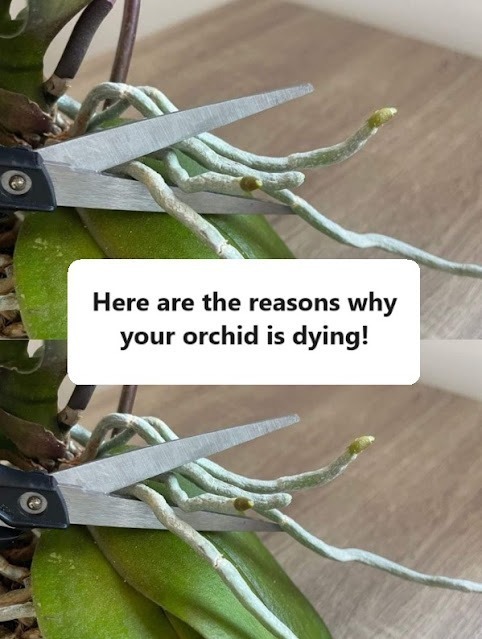ADVERTISEMENT
The pot you choose can have a big impact on the health of your orchid. Orchids need a well-draining pot with plenty of holes to allow excess water to escape. If the pot is too small or doesn’t provide proper drainage, the orchid’s roots may suffocate or rot.
Signs of improper potting: Root rot, yellow leaves, stunted growth. Solution: Repot your orchid into a container that’s just slightly larger than the current one. Make sure the new pot has sufficient drainage holes. Use a potting mix designed for orchids, which typically contains bark, charcoal, and other materials to ensure good airflow around the roots.
8. Wrong Type of Orchid for Your Environment
Not all orchids are the same. There are many varieties, and each has slightly different care requirements. For example, some orchids prefer more humidity, while others can tolerate drier conditions.
Signs of wrong orchid variety: Lack of flowering, poor growth, or general decline despite good care. Solution: Make sure you’re choosing an orchid variety that matches your home’s conditions. Phalaenopsis orchids, for example, are some of the easiest to care for and can tolerate a range of temperatures and light levels. On the other hand, Cattleya orchids prefer more light and humidity.
9. Shock from Repotting
Repotting your orchid can be stressful, especially if it’s not done properly. Orchids can experience shock from being moved to a new pot, which may cause them to lose leaves, flowers, or even die if not done correctly.
Signs of repotting shock: Drooping leaves, no new growth, or blackened roots. Solution: Repot your orchid only when necessary, typically every 1-2 years. Be gentle with the roots, trim any dead or damaged roots, and place the plant into its new pot carefully. Avoid watering right away after repotting; wait for a few days to allow the roots to heal.
10. Natural Life Cycle
Sometimes, your orchid may not be dying at all. Many orchids go through a natural dormancy period after blooming, where the plant may lose its flowers and appear less vibrant. This is completely normal!
Signs of natural life cycle: Flowers falling off, no new blooms. Solution: Give your orchid a break. Continue to care for it, but don’t be discouraged if it’s not flowering. Orchids can have a “rest period” and will bloom again once they’re ready.
Conclusion: Giving Your Orchid the Best Care
Orchids are relatively easy to care for once you understand their specific needs. By addressing the issues mentioned above, you can help your orchid thrive and enjoy its stunning flowers for years to come. Remember to monitor your plant regularly, make adjustments as needed, and be patient – orchids are slow-growers, but with the right care, they’ll reward you with beauty in return.
So, if your orchid seems to be on the decline, don’t panic! There are usually clear causes, and with a little effort, your orchid can bounce back and bloom again. Happy gardening!
